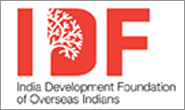BRICS WORKSHOP ON AGRICULTURE AND CLIMATE CHANGE ORGANIZED BY THE FOREIGN ECONOMIC COOPERATION CENTER, MINISTRY OF AGRICULTURE, PEOPLE’S REPUBLIC OF CHINA
Opening Ceremony Speech by K. Nagaraj Naidu, Counsellor (T&C), Embassy of India, Beijing at June 20, 2012 Beijing
Mr. Liu Yingjie, Deputy Director General, Int’l. Coop Dept, Ministry of Agriculture My counterparts from the BRIC countries Experts Ladies and Gentlemen Good Morning to all of you
1. Agriculture plays a critical role for ensuring food and livelihood security of the population of a nation. It further assumes a crucial role in light of existing vulnerabilities relating to competing demand on limited land and water resources and additional stressors arising from changing climate. While in the long run, climate change is likely to exacerbate current stresses and increase vulnerability of food production and livelihoods of farming communities, in the short run climatic variability and occurrence of extreme weather events are already affecting agricultural production including livestock and fisheries thereby threatening food and livelihood security in a number of countries globally.
2. The Indian economy has been witnessing a structural transformation during the past few decades. The share of agriculture, including forestry and fisheries, in the nations GDP has significantly declined as growth in industries and service sector far outpaced it. While India’s GDP has seen an average annual growth of about 8% in recent years, growth in agriculture has been limited to about 3% (2006-2011). Despite a steady decline of the share of agriculture in India’s GDP, which now stands at 17%, the majority of Indian workforce (about 54%) continues to depend on agricultural and allied activities. Besides, almost 72% of the country’s population resides in rural areas and most of this population depends directly or indirectly on agriculture for its livelihood.
3. In India, more than 60% of the cropped area still depends largely on monsoon rainfall for irrigation water. Rainfed agriculture is predominant in pulses, oilseed and cotton cultivating areas in west and central India and in rice growing belt in eastern India. Variability in weather is one of the major reasons for year-to-year fluctuations in agricultural yields in India. While extreme weather conditions, such as floods, droughts, heat and cold waves, flash floods, cyclones etc. are direct hazards to crops, more subtle fluctuations in weather during critical phases of crop development cause substantial impact on yields.
4. According to the 4th assessment report of the International Panel on Climate Change (IPCC) released in 2007 changes in frequency and severity of extreme climatic events in addition to the impacts of projected higher surface temperature have significant consequences for food production. Global consensus on threats from phenomenon of climate change to all natural and human systems has induced large scale research and development in terms of climate projections at global and regional scales and also in terms of modeling and assessment of impacts from the changing climate on various aspects of agriculture and food security.
5. Research studies by the Indian Council of Agricultural Research revealed that due to changing climate, the mean summer rainfall in India is likely to increase but it will be associated with longer dry spells, more frequent heavy precipitation events and hot extremes. The Mean Annual Temperature (MAT) is also likely to rise by 3-4 degrees centigrade by the end of this century. Sea level would also like to witness a rise between 0.18 – 0.59 meters.
6. It is also estimated that due to temperature changes and rainfall uncertainty alone, there may be 18% fall in the total cereal production in India. Summer crops (Kharif) in rainfed areas are more vulnerable to climate variability and extreme events due to inherent uncertainty and associated risks. Greater loss is also expected in winter crops (Rabi) where it is estimated that for every 1 degree centigrade increase in mean temperature, wheat production is likely to reduce by 4-5 million tons per annum. Further, extreme events like droughts and floods, associated higher incidences of pests and diseases are likely to pose more risk in India’s rainfed agriculture that constitutes 60% of total net sown area, contributes to 40% of total food production and supports 40% of human and 60% of livestock population.
7. Like in a number of developing countries in South and South East Asia, India is vulnerable to climatic extremities as the population lacks requisite adaptive capacity and coping mechanisms. Significant changes in climatic determinants will not only have far reaching consequences in terms of shortages of food articles and rising prices thereby endangering food and livelihood security of the country, but will also affect the well being of millions in India who depend on agriculture for their livelihood.
8. Ensuring food and nutritional security and maintaining economic stability at national level are therefore central to India’s overall planning. India’s food grain demand is likely to reach 281 million tons by 2020 from the current level of 241.6 million ton (2011) owing to a growing population and various government initiatives for ensuring food to weaker section of society. While policies and programs are important for sustaining growth, complementary policy and programmatic interventions will be necessary, both in short and medium term, to progressively adapt Indian agriculture to climate changes and variability.
9. India’s National Action Plan on Climate Change (NAPCC) announced in year 2008 is the National strategy document that identifies measures for promoting India’s development objectives while addressing issues related to climate change effectively. The plan outlines a number of steps to advance India’s development and climate change-related objectives of adaptation and mitigation through eight National Missions. These Missions form the core of the National agenda, representing multi-pronged, long-term and integrated strategies for achieving key goals in the context of climate change. Prime Minister’s Council on Climate Change (PMCCC) monitors outcome of these Missions on a regular basis.
10. The National Mission for Sustainable Agriculture, one of these eight missions, envisages to transform Indian agriculture into a climate resilient production system with multi-faced objectives; to enhance livelihood opportunities, to grow and ecologically sustain agricultural production, to ensure food security and equitable access to food which would ultimately contribute to economic stability at macro or National level.
11. Ministry of Agriculture, Govt. of India, has already operationalized the National Mission for Sustainable Agriculture by identifying quantifiable deliverables and embedding them into ongoing research and development programs and in flagship schemes including the National Agriculture Development Program (RKVY), the National Horticulture Mission (NHM), the National Food Security Mission (NFSM) etc. through a process of selective up-scaling and course correction measures. In the near future, these schemes will be supplemented by introduction of new programmatic interventions.
12. India has been able to create institutional mechanisms for addressing climate issues and mainstreaming adaptation measures in different ministries, such as the Ministry for environment and forest, Ministry of agriculture, Ministry of energy, Ministry of water and Ministry for industry with the Prime Minister’s Council on Climate Change (PMCCC) as the federal level apex policymaking body. However, there are still issues. India has a ‘Federal-State’ structure. While agriculture and water are state controlled subjects, all nationally sponsored developmental programs related to water and agriculture are implemented by the respective state or provincial governments. While the states or provinces desire to have adequate flexibility for catering to regional needs, policy makers at the federal level prefer a ‘one size fits all’ policy. Studies have shown that adaptation measures for local production systems are too diverse to be captured by a generic federal policy recommendation. Therefore strengthening the linkages and enhancing coordination between the federal government and the states on sustainable development and climate change policies is vital to the overall efforts to address climate concerns and enhance resilience of Indian agriculture to climate change.
13. Climate change is a reality and may constrain attainment of future food production targets. There are a number of potential adaptation strategies that can help reduce the negative impacts in the short-term but to a limited extent. However, adopting of these strategies need to be backed by research, policy, and financial support. While the costs of adaptation are unknown but likely to be high; costs of inaction could be even higher.
Thank You





























